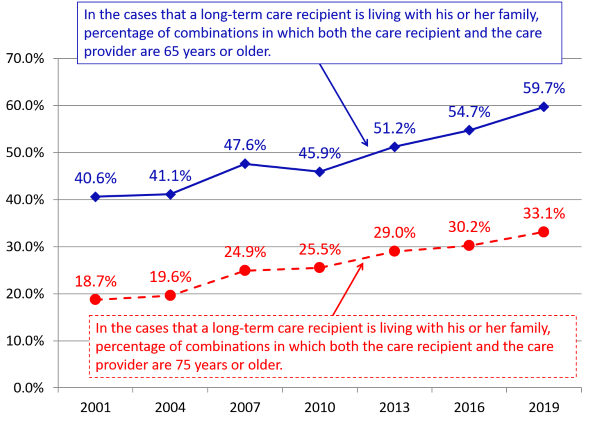Column Finance and the Social Security System 2020.08.17
【Aging, safety net and fiscal crisis in Japan】No.260: Cases of elderly care of spouses are increasing
In this column series, Yukihiro Matsuyama, Research Director at CIGS introduces the latest information about aging, safety net and fiscal crisis in Japan with data of international comparison.
According to a survey released by the Ministry of Health, Labor and Welfare in July 2020, the overall age of long-term care recipients has been increasing, and the number of cases in which a family member who is elderly provides care to another elderly person has increased. Figure 1 compares the age distribution of long-term care recipients in 2011 and 2019. The percentage of care recipients aged between 85 and 89 years increased from 21.0% to 25.1%, and the percentage of care recipients aged 90 or more increased from 14.9% to 24.2%. Figure 2 shows the age distribution of care recipients by gender in 2019. Among women (who have a longer average life expectancy than men), 56% of care recipients were 85 or older.
As shown in Figure 3, in the cases where a long-term care recipient is living with his or her family, the percentage of couples in which both the care recipient and the care provider are 65 or older increased from 40.6% in 2001 to 59.7% in 2019. The percentage of instances in which both the care recipient and the care provider were 75 or older increased from 18.7% to 33.1% during the same period.
Figure 1: Changes in the age distribution of long-term care recipients

Source: Ministry of Health, Labor and Welfare
Figure 2: Age distribution of long-term care recipients by gender

Source: Ministry of Health, Labor and Welfare
Figure 3: Percentage of instances in which both the care recipient and the care provider are elderly.

Source: Ministry of Health, Labor and Welfare
